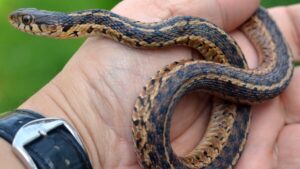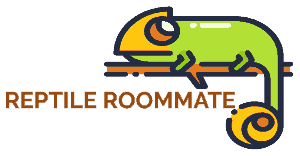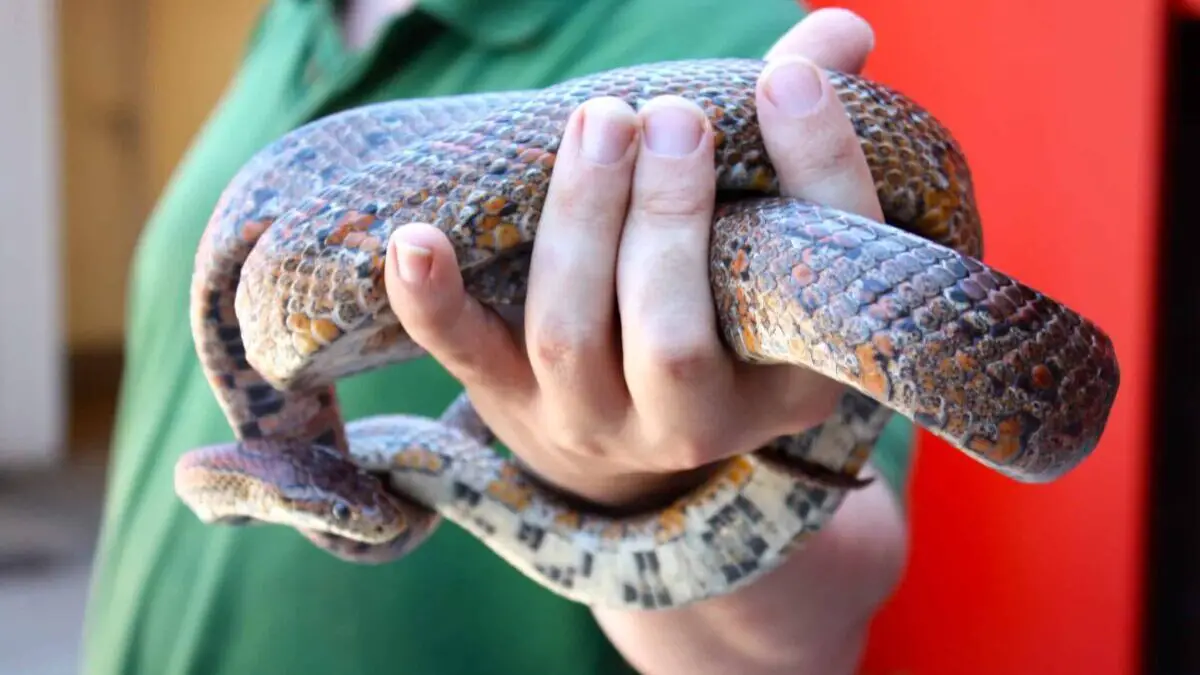Are Pet Snakes Dangerous? Snakes Are Some of the Safest Pets!
How to Be Sure That Your Pet Snake Isn’t Dangerous
Fear of snakes is as old as time. Movies, television, and the news seem to have an affinity for making out snakes to be dangerous and almost evil creatures; even the Bible’s main protagonist is depicted as a snake. However, for those that have snakes and enjoy them keeping them safely isn’t difficult at all.
Headlines crying out “the dangers of pet snakes…” is grossly misrepresented!
Reptile Roommate is a participant in the Amazon Services LLC Associates Program. As an Amazon Associate I earn from qualifying purchases.
But Wait! Aren’t Some Snakes Venomous?
There are many snakes that are venomous, capable of injecting venom with a bite, and these snakes can certainly be deemed dangerous; even deadly!
MOST of these animals are NOT kept as pets and those that are, are kept by the most experienced keepers.
This article’s focus is on the average snake keeper and will showcase ONLY non-venomous snakes!
…Okay But Don’t Snakes Bite?

“Snake Are Just Plain Cool” by Tony Alter is licensed under CC BY 2.0
Snakes, like nearly any other animal, can (and sometimes mistakenly) do bite. However, there is a distinct difference between the potential for a bite and being dangerous.
Even more, there is an even bigger difference when compared to the “dangers” of keeping other types of pets.
Dogs Bites in the United States
There are approximately 4.5 million dogs bites each year in the U.S.
- 1 in 5 People bitten by dogs require medical attention
- Children are the most common victims and are far more likely to be severely injured
- In 2017 there were 39 dog bite-related fatalities in the U.S.
- In 2018 over 26,000 people had reconstructive surgery as a result of dog bites

It’s Not Just Snakes. Or Even Pets!
Almost 40 people DIE skateboarding every year, on average!! (2011-2015 resulted in 147 deaths)
Over 125,000 skateboarding injuries require a trip to the hospital emergency room (in 2015)!
Horses Deadlier Then Venomous Animals?
An Australian researcher concluded in a 2013 study that horses killed more people than ALL VENOMOUS animals in Australia COMBINED!
“The study found horses were responsible for 74 reported deaths from 2000-2013, while bees and other stinging insects were blamed for 27 deaths. Snakes caused 27 fatalities, and no reported deaths were linked to spider bites.”
How Dangerous Are Snake Bites Anyway?
Snakes, especially venomous ones, certainly can and do kill. However, the overwhelming majority of the bites and nearly ALL of the deaths from snake bites are a result of being bit by a venomous snake in the wild!
There are an average of between 7,000-8,000 snakes bites annually in the US and only .2% (1 out of 500) venomous bites result in death. These bites are almost all from specimens encountered in the wild.
Bites can happen from our pet snakes however, they are nearly always superficial wounds. Only the largest of snakes, reticulated pythons, Burmese pythons, etc can cause damage serious enough for a visit to the emergency room.
Even then, these bites are rare and for the most part, completely avoidable. For your average pet snake; a ball python, corn snake, kingsnake, boa constrictor and the like, a bite from these snakes is oftentimes less “harmful” than being scratched by your cat!
A Bite From Your Pet Snake
Snakes have very sharp teeth which is actually a good thing. Snake’s teeth aren’t blunt like a dog’s are or very hard and thick like a parrot.
An accidental strike from a ball python for example will leave you with a few pin-sized hole punctures in the skin which may or may not even bleed. Now to be fair, the larger the snake (like a full grown reticulated python or even an emerald tree boa) the larger the teeth.
However in our opinion a reticulated python (or similar) is not a beginner snake and should be kept by experienced handlers. While it is possible to get quite a severe injury from a very large snake such as retics and Berms, these instances are rare; death practically nonexistent.
Cleaning Your Superficial Bite
One of the first things to do after getting bit by any animal is to make sure that you know whether the animal is sick/infected/rabid or in the case of a snake bite if it’s venomous. Any doubt you should seek medical attention right away!
Second, clean the wound/bite are with warm soapy water.
Make sure the bite is only superficial (surface damage) and that you won’t require stitches or sutures.
Most, if not all, snakes bites will require no more than a bandaid and the mending of a bruised ego. (and perhaps some more research into your particular snake’s behavior patterns!)
Can I Get Salmonella From My Pet Snake?
Salmonella can spread through direct and indirect contact with amphibians, reptiles (turtles, snakes, lizards) or their waste.
Reptile waste, just like all other waste, can be potentially harmful. Below are some tips and suggestions to reduce the risk of salmonella infection when handling and caring for your pet snake.
Reduce the Risk -The Do’s and Don’ts of Snake Handling
- DO Wash your hands thoroughly with soap and water (a minimum of 20 seconds) immediately after handling your snake. DO make sure to assist children in their hand washing.
- DO supervise children while they are handling their snake. (or any reptile/amphibian)
- DO clean and disinfect ALL surfaces that your come into contact with your snake objects in or near the area you have it.
- DO use reptile-safe disinfectant
- DO clean your snake’s enclosure and its contents regularly. DO use disposable gloves for best protection.
- DO flush reptile waste down the toilet (when applicable)
- DO dispose of snake waste in a receptacle that is NOT located in your kitchen.
- DON’T dispose of waste water from your snake’s water dish(or from cleaning) in sinks in your kitchen or where you prepare food.
- DON’T dispose or clean waste/enclosure near your garden or source of drinking water.
- DON’T let children under the age of 5, pregnant women, the elderly, or those with compromised immune systems handle or touch your snake or objects that have been in contact with your snake. The safest option is to keep reptiles completely out of homes of the aforementioned.
- DON’T keep reptiles in your child’s bedroom, especially if they are under the age of 5.
- DON’T kiss your pet snake.
- DON’T touch your mouth after handling your snake and don’t eat or drink until you’ve washed your hands thoroughly with soap and water.
Can’t Big Snakes Eat Their Owners? Or Squeeze Them to Death?
Again, being eaten by a snake or having one constrict you until you die, are more movie fiction than reality.
That said there are some reports from around the world of small children or even adults reportedly being eaten by huge wild pythons. These creatures are well beyond the scope of this article and your average pet snake.
There is more of a risk with these large constrictors strangling incapacitating people. IF you are an experienced snake keeper and you choose to keep very large snakes it is common practice to ALWAYS handle very large constrictors with a minimum of 2 people and NEVER alone.
Again, this is a bit beyond the scope of this article and does not apply to the average pet snake that many, many people keep.
Are Pet Snakes Safe? Answered.
Keeping a pet snake is quite safe with proper care and cleanliness. (possible exceptions: venomous species, very large species)
Compared to other pets, snakes and reptiles are very safe and are less dangerous than the family dog or cat.
The biggest risk of owning a snake can be mitigated by properly washing your hands and keeping your reptile healthy and its enclosure clean!
Cover photo – “SNAKE!” by Neil Turner is licensed under CC BY-SA 2.0


